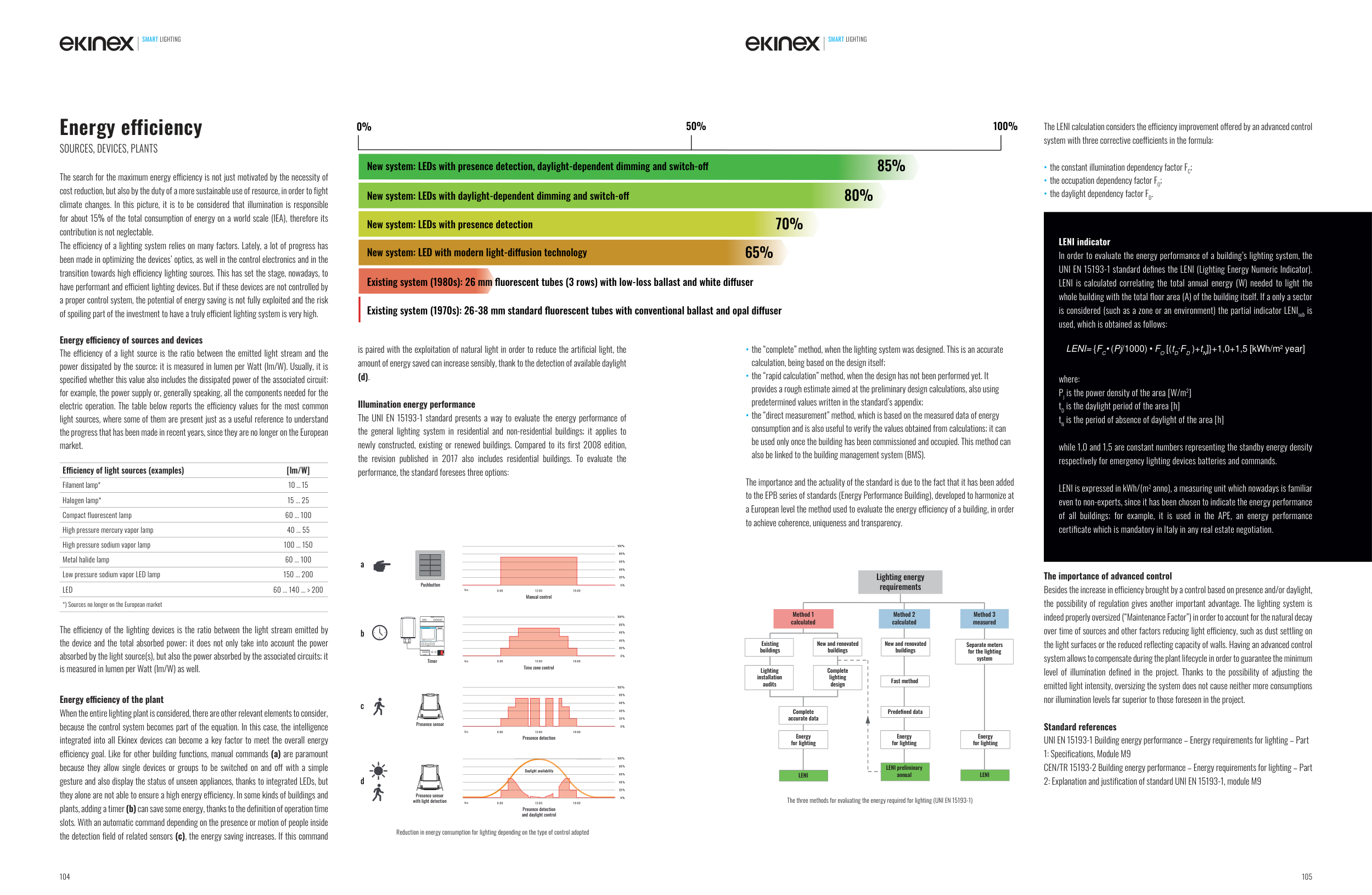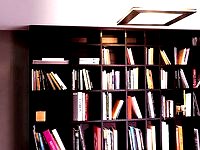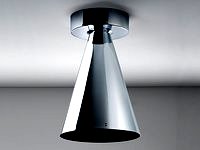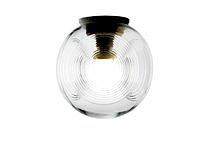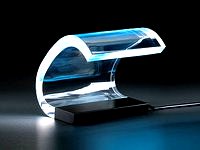The search for the maximum energy efficiency is not just motivated by the necessity of
cost reduction, but also by the duty of a more sustainable use of resource, in order to fight
climate changes. In this picture, it is to be considered that illumination is responsible
for about 15% of the total consumption of energy on a world scale (IEA), therefore its
contribution is not neglectable.
The efficiency of a lighting system relies on many factors. Lately, a lot of progress has
been made in optimizing the devices’ optics, as well in the control electronics and in the
transition towards high efficiency lighting sources. This has set the stage, nowadays, to
have performant and efficient lighting devices. But if these devices are not controlled by
a proper control system, the potential of energy saving is not fully exploited and the risk
of spoiling part of the investment to have a truly efficient lighting system is very high.
Energy effi ciency of sources and devices
The efficiency of a light source is the ratio between the emitted light stream and the
power dissipated by the source; it is measured in lumen per Watt (lm/W). Usually, it is
specified whether this value also includes the dissipated power of the associated circuit:
for example, the power supply or, generally speaking, all the components needed for the
electric operation. The table below reports the efficiency values for the most common
light sources, where some of them are present just as a useful reference to understand
the progress that has been made in recent years, since they are no longer on the European
market.
The efficiency of the lighting devices is the ratio between the light stream emitted by
the device and the total absorbed power; it does not only take into account the power
absorbed by the light source(s), but also the power absorbed by the associated circuits; it
is measured in lumen per Watt (lm/W) as well.
Energy effi ciency of the plant
When the entire lighting plant is considered, there are other relevant elements to consider,
because the control system becomes part of the equation. In this case, the intelligence
integrated into all Ekinex devices can become a key factor to meet the overall energy
efficiency goal. Like for other building functions, manual commands (a) are paramount
because they allow single devices or groups to be switched on and off with a simple
gesture and also display the status of unseen appliances, thanks to integrated LEDs, but
they alone are not able to ensure a high energy efficiency. In some kinds of buildings and
plants, adding a timer (b) can save some energy, thanks to the definition of operation time
slots. With an automatic command depending on the presence or motion of people inside
the detection field of related sensors (c), the energy saving increases. If this command
is paired with the exploitation of natural light in order to reduce the artificial light, the
amount of energy saved can increase sensibly, thank to the detection of available daylight
(d).
Illumination energy performance
The UNI EN 15193-1 standard presents a way to evaluate the energy performance of
the general lighting system in residential and non-residential buildings; it applies to
newly constructed, existing or renewed buildings. Compared to its first 2008 edition,
the revision published in 2017 also includes residential buildings. To evaluate the
performance, the standard foresees three options:
100%
50%
0%
70%
65%
80%
85%
������������������������������������������������������������������������������������������������
����������������������������������������
��������������������������������������������������������������
����������������������������������������������������������������������������������
�����������������������������������������������������
������������������������������������������������������������������������������������������������������
Energy efficiency
SOURCES, DEVICES, PLANTS
• the “complete” method, when the lighting system was designed. This is an accurate
calculation, being based on the design itself;
• the “rapid calculation” method, when the design has not been performed yet. It
provides a rough estimate aimed at the preliminary design calculations, also using
predetermined values written in the standard’s appendix;
• the “direct measurement” method, which is based on the measured data of energy
consumption and is also useful to verify the values obtained from calculations; it can
be used only once the building has been commissioned and occupied. This method can
also be linked to the building management system (BMS).
The importance and the actuality of the standard is due to the fact that it has been added
to the EPB series of standards (Energy Performance Building), developed to harmonize at
a European level the method used to evaluate the energy efficiency of a building, in order
to achieve coherence, uniqueness and transparency.
The LENI calculation considers the efficiency improvement offered by an advanced control
system with three corrective coefficients in the formula:
• the constant illumination dependency factor FC;
• the occupation dependency factor FO;
• the daylight dependency factor FD.
The importance of advanced control
Besides the increase in efficiency brought by a control based on presence and/or daylight,
the possibility of regulation gives another important advantage. The lighting system is
indeed properly oversized (“Maintenance Factor”) in order to account for the natural decay
over time of sources and other factors reducing light efficiency, such as dust settling on
the light surfaces or the reduced reflecting capacity of walls. Having an advanced control
system allows to compensate during the plant lifecycle in order to guarantee the minimum
level of illumination defined in the project. Thanks to the possibility of adjusting the
emitted light intensity, oversizing the system does not cause neither more consumptions
nor illumination levels far superior to those foreseen in the project.
Standard references
UNI EN 15193-1 Building energy performance – Energy requirements for lighting – Part
1: Specifications, Module M9
CEN/TR 15193-2 Building energy performance – Energy requirements for lighting – Part
2: Explanation and justification of standard UNI EN 15193-1, module M9
Lighting energy
requirements
Method 1
calculated
Method 2
calculated
Method 3
measured
Existing
buildings
Complete
accurate data
Energy
for lighting
Energy
for lighting
Energy
for lighting
LENI preliminary
annual
New and renovated
buildings
New and renovated
buildings
Separate meters
for the lighting
system
Lighting
installation
audits
Complete
lighting
design
LENI
Fast method
��������������
LENI
The three methods for evaluating the energy required for lighting (UNI EN 15193-1)
Efficiency of light sources (examples)
[lm/W]
Filament lamp*
10 ... 15
Halogen lamp*
15 ... 25
Compact fluorescent lamp
60 ... 100
High pressure mercury vapor lamp
40 ... 55
High pressure sodium vapor lamp
100 ... 150
Metal halide lamp
60 ... 100
Low pressure sodium vapor LED lamp
150 ... 200
LED
60 ... 140 ... > 200
*) Sources no longer on the European market
100%
80%
60%
40%
20%
0%
100%
80%
60%
40%
20%
0%
100%
80%
60%
40%
20%
0%
100%
80%
60%
40%
20%
0%
0
0
:8
1
0
0
:2
1
0
0
:6
0
0
:8
1
0
0
:2
1
0
0
:6
0
0
:8
1
0
0
:2
1
0
0
:6
0
0
:8
1
0
0
:2
1
0
0
:6
Manual control
Time zone control
Presence detection
Presence detection
and daylight control
E K -T M1 -TP
Dig ital time / A strono mical swi tch
Daylight availability
Ora
Ora
Ora
Ora
Pushbutton
Timer
Presence sensor
Presence sensor
with light detection
a
b
c
d
Reduction in energy consumption for lighting depending on the type of control adopted
LENI indicator
In order to evaluate the energy performance of a building’s lighting system, the
UNI EN 15193-1 standard defi nes the LENI (Lighting Energy Numeric Indicator).
LENI is calculated correlating the total annual energy (W) needed to light the
whole building with the total fl oor area (A) of the building itself. If a only a sector
is considered (such as a zone or an environment) the partial indicator LENIsub is
used, which is obtained as follows:
LENI= {FC• (Pj/1000) • FO [(tD��D )+tN]}+1,0+1,5 [kWh/m2 year]
where:
Pj is the power density of the area [W/m2]
tD is the daylight period of the area [h]
tN is the period of absence of daylight of the area [h]
while 1,0 and 1,5 are constant numbers representing the standby energy density
respectively for emergency lighting devices batteries and commands.
LENI is expressed in kWh/(m2 anno), a measuring unit which nowadays is familiar
even to non-experts, since it has been chosen to indicate the energy performance
of all buildings; for example, it is used in the APE, an energy performance
certifi cate which is mandatory in Italy in any real estate negotiation.
SMART LIGHTING
SMART LIGHTING
104
105


